How to deal with late blight on tomatoes in the open field?
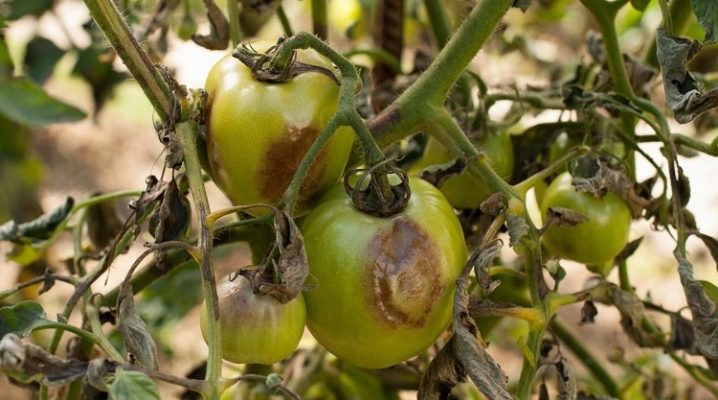
Late blight is a common tomato disease caused by Phytophthora Infestans. The disease proceeds rapidly, if the gardener does not start the fight in time, it will destroy the culture. We will figure out how to recognize the first signs of late blight on tomatoes, and what needs to be done to save the crop.
Description of the disease
More than 50 types of fungi are known that cause late blight, but the most dangerous for tomatoes is Infestans. The activity of these parasites increases in conditions of high humidity, in which plants become infected in a few hours. Not only plants are susceptible to disease, but also their seeds.
When tomatoes are infected, the first signs of the disease appear as early as 2-3 days. To minimize damage, the bushes should be inspected daily.
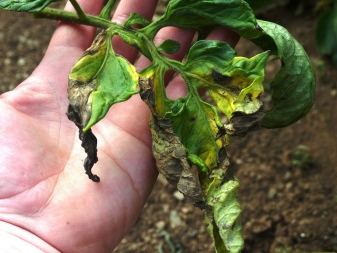
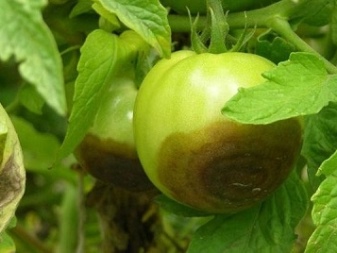
Let's list the signs of infection.
- The appearance of dark brown spots on foliage. They grow rapidly and acquire a whitish color with a dense bloom.
- The appearance of gray-brown spots on the stems... The plant becomes weak, painful. Its inflorescences begin to fall off rapidly. At this stage of the disease, it is too late to try to save the bushes.
- The formation of oily spots will tell about the signs of late blight on fruits. The next stage is deformation and rotting of the fruit.
The gardener himself is often to blame for the occurrence of late blight. There are many factors that can provoke the appearance and active reproduction of the fungus.
- Excessive humidity. It is observed with improper watering, prolonged rains, too densely planted bushes (in this case, natural air circulation is hampered). Stagnant moisture and poor ventilation are the best conditions for activating the causative agent of the disease.
- Reduced plant immunity. The bushes become weak if the irrigation regime is not followed, the lack of micro- and macroelements.
- Over-application of nitrogen-based nutritional supplements... The substance stimulates not only the development of the fungus, but also the growth of weeds near tomatoes, which impede proper air exchange.
- Planting tomatoes in highly alkaline soil... Alkalization of the earth occurs with excessive application of lime or dolomite flour.
Phytophthora on tomatoes in the open field is less common than in a greenhouse, since usually the humidity there is much lower.
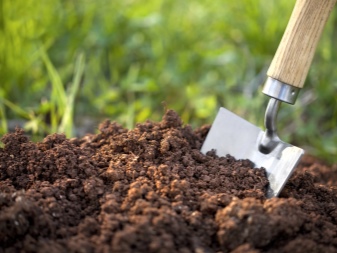

How to process tomatoes?
Spraying is effective only in the early stages of the disease. With abundant lesions, it is pointless to fight the fungus - in this case, the bushes need to be pulled out and burned. You can spray the affected tomatoes with biological products, pharmacy and chemical agents.
There are also effective folk methods - it is advisable to resort to them when the bushes are damaged by 5-10%. Whichever method is chosen, first of all, before processing, you need to remove the affected foliage and burn it.
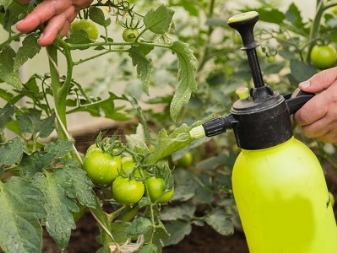

Chemicals
Proved high efficiency at the initial stages of late blight development. Such funds are toxic, they pose a danger to humans, so it is recommended to use them before the flowering of tomatoes.
Here are some effective chemicals.
- "Hom"... Fungicide based on copper oxychloride. It does not penetrate inside, but only acts on the surface of leaves, stems and fruits. The drug is recommended for the prevention of late blight. The substance is a blue-green powder.To spray tomatoes, the product must be diluted in water according to the instructions. Weather forecasts should be taken into account before treatment, as the preparation is quickly washed off by rain.
- Ordan. The product is in powder format from a domestic manufacturer. Consists of 2 active components: copper oxychloride and cymoxanil. Copper oxychloride actively fights fungus on the surface of tomatoes, cymoxanil has an internal effect. The advantage of the drug is low toxicity. It penetrates into the soil, but is completely removed from the soil at the end of the season. The product is dangerous for bees and other insects, therefore it is unacceptable to use it during the flowering period. To prepare a working solution for spraying, dilute 50 g of powder in a bucket of water (the prepared solution cannot be stored).
- Thanos. Belongs to the group of contact-systemic fungicides. Its active ingredients are famoxadone and cymoxanil. The first destroys fungal spores, the second prevents the occurrence of late blight, heals the affected areas and creates a protective shell on the surface of the bushes. The product is presented in the format of water-soluble granules. They are not subject to crystallization and freezing. They do not generate dust when preparing the working solution and do not precipitate. The popularity of Thanos is due to its efficiency, economical consumption and convenient form of release. The active substances of the drug do not accumulate in the soil and fruits. To spray tomatoes, 15 g of the product must be diluted in 10 liters of water.
- Ridomil Gold... It is a systemic fungicide from a Swiss manufacturer. The composition of active substances: mancozeb - a component that is responsible for external protection, mefenoxam - for internal. The drug is available in the form of powder and water-dispersible granules. Its main advantages are: rapid destruction of fungi, lack of resistance, proven effectiveness even at high invasions. The disadvantages of the drug include its high toxicity (hazard class 2 for humans), high cost, ability to accumulate in the soil. To prepare a spray solution, you need to dissolve 25 g of granular product in 5 liters of water.
In the treatment of late blight, they are also effective. Fundazol, Topaz, Quadris, copper sulfate. The latter drug is produced in the form of Bordeaux liquid or solutions with different concentrations of the active substance.
This drug is universal - it is used both for spraying plants and for dressing the soil before sowing seeds or planting seedlings. The main disadvantage of the tool is its low efficiency compared to other chemicals.
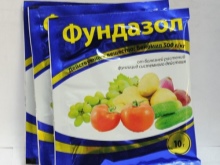
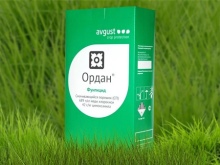
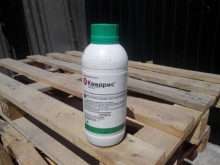
Biologicals
Biological agents, unlike chemical ones, are not made in a laboratory. Their active substances are produced by living organisms - fungi or bacteria. They do not pose a danger to human health, do not accumulate in fruits and soil - this is their main advantage.
We will present the most popular and effective biological preparations against phytophthora.
- "Baktofit" - a product containing cells and spores of Bacillus subtilis (hay bacillus). It is produced in the format of a yellow or light gray water-soluble powder. It is recommended to use "Baktofit" as a prophylactic drug. It not only infects the phytophthora fungus, but also has an anti-stress effect - it mitigates the negative effects of the use of pesticides-chemicals. Suitable for multiple treatments. Affordable.
- Fitosporin. Biological product based on hay bacillus. Actively suppresses phytophthora and other fungi. The drug is made in the form of a paste, powder or liquid solution. You need to prepare the solution in a warm place. To activate microorganisms, let it stand for a day.
- Trichoderma Veride. The product contains fungi of the genus Trichoderma, which are able to suppress more than 60 varieties of harmful microorganisms.When plants are sprayed with the agent, a mycelium is formed, parasitizing on phytophthora. Manufacturers make the product in powder form. It is packed in bags of 15, 30 g and plastic containers of 120 g. Before use, the drug is diluted according to the instructions. The ready-made solution is used for watering tomatoes at the root, external processing of tomatoes and soaking planting material in order to prevent late blight.
Biologicals can be used at any stage of plant growth and development. They are safe not only for humans, but also for insects and the environment.
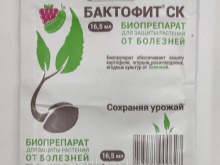
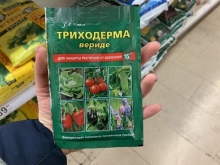
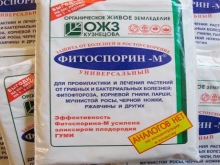
Pharmacy products
Medicines can restore human health, and some of them can fight late blight and other fungal plant diseases. Here are the popular inexpensive drugs from the pharmacy.
- "Metronidazole"... The tablets are effective against anaerobic flora, various protozoa and fungal invasions. To prepare the solution, it is necessary to dilute 20 tablets in 1 liter of water, and then bring the volume to 10 liters. For greater effectiveness, it is recommended to add 2-3 tablespoons of liquid soap. The working solution cannot be stored - it must be used within a few hours after preparation.
- "Furacilin"... A solution based on these tablets inhibits the development of fungal spores and completely destroys mycelium. Before preparing the solution, the tablets should be crushed, otherwise the substance will dissolve in water for a very long time. For 10 tablets, you need to take 1 liter of hot non-chlorinated water, and after dissolving the drug, bring the volume to 10 liters. The working solution is allowed to be prepared for future use, since it does not lose its properties when stored in a cool dark place.
- Iodine... This is not only an antiseptic preparation, but also a good top dressing for tomatoes. To prepare a spray solution, add 20 drops of iodine to a bucket of water, mix well. Gardeners also use a means to strengthen seedlings, for this you need to place open jars of iodine next to the planting material.
- "Trichopolus". Its action is similar to "Metronidazole". To prepare a solution, 20 tablets must be diluted in 1 liter of water. To speed up the process, it is recommended to pre-grind the preparation. Before spraying, the solution should be infused for 20-30 minutes. To enhance the effect, you can add 1 bottle of brilliant green to the solution.
Solutions based on boric acid, calcium chloride, hydrogen peroxide and potassium permanganate (potassium permanganate) are also effective.... Pharmacy preparations do not harm plants, however, with regular use, they are addictive in pathogens, which reduces their effectiveness.
To prevent this from happening, you need to alternate the use of medicines, biological and chemical preparations.
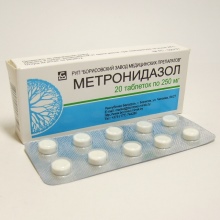
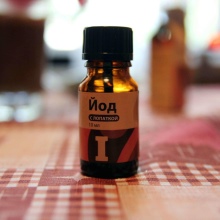
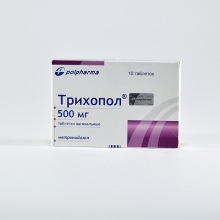
Folk methods of struggle
Folk methods will help to get rid of phytophthora on tomatoes in the open field. Their effectiveness is lower than that of chemicals, but they do not harm plants and the environment. They can be used as a preventive measure or at the initial stage of tomato fungal infection.
Here are some effective methods.
- Infusion based on horsetail. This plant is a storehouse of calcium, phosphorus, iron and manganese. It also contains silicic acid, which prevents the growth of fungi on tomatoes. To prepare the solution, you need to pour half a kilogram of horsetail greens with 5 liters of water and insist for a day. After that, the solution should be boiled for half an hour, cooled and filtered. The resulting composition must be diluted with water in a ratio of 5: 1 and sprayed on the tomatoes. The product can be stored in the refrigerator, but not more than 15 days. By the same analogy, you can prepare a nettle broth.
- Yeast... To prepare a solution for processing, dissolve 100 g of raw yeast in a bucket of warm water. This composition should be sprayed on tomato bushes.After a week, it is recommended to repeat the treatment.
- Garlic extract. Garlic has antiseptic and fungicidal properties. In addition, its pungent smell repels insect pests: whitefly, spider mites and aphids. To prepare the extract, you need to chop 200 g of garlic, pour a bucket of water and let it brew for 24 hours. After straining, the product is ready to use. To achieve a positive effect, it is necessary to carry out treatments regularly - at least 2-4 times a month.
- Milk serum... It can be used alone or as a solution diluted with water in a 1: 1 ratio.
- Table salt. To prepare a solution, you need to dissolve 100 g of salt in 1 liter of water. When spraying, a protective film forms on the bushes, which prevents the fungal infection from entering.
Folk recipes are safe, you can resort to them during the flowering and ripening period of tomatoes.
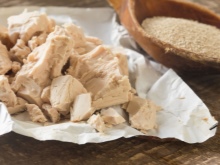
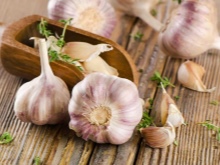
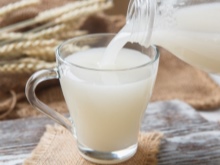
How to spray correctly?
To preserve the harvest, you need not only to carry out processing in a timely manner, but also correctly. Spraying tomatoes should be done only in calm and dry weather. If there is precipitation outside the window, it is better to postpone the procedure. Treatment by spraying tomatoes should be done in the evening or early in the morning.... If you neglect this rule, the sun's rays falling on the treated wet foliage will lead to burns.
When using toxic agents, you should use personal protective equipment: respirator, gloves, goggles. Keep in mind that it is not recommended to treat tomatoes with chemicals when there are already fruits.
Note! It is not allowed to prepare solutions in metal containers - this will lead to oxidation.
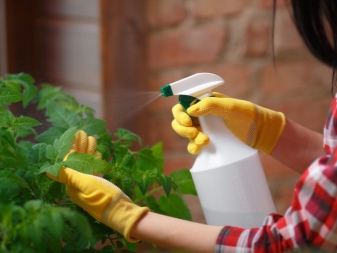

Prevention measures
There are several rules under which the risks of late blight will be significantly reduced.
- Before planting, the seeds need to be processed: soak for 2 hours in hot water at a temperature of 50 degrees. Overheating should be excluded, since when the temperature rises by 10 degrees, the seeds will die.
- Seedlings must be planted according to the scheme, avoiding the proximity of the bushes to each other. For low-growing varieties, the optimal distance between rows is 60-70 cm, and between bushes - 40-50 cm.
- To form good immunity, you need to regularly feed the tomatoes with phosphorus and potassium-containing fertilizers... It is important to eliminate the high nitrogen content of the soil.
- To avoid the occurrence of fungal diseases, you need to properly water the tomatoes. - under the root, preventing moisture from entering the foliage. Plants should be watered in the daytime so that the liquid has time to be absorbed before the nighttime cold snaps.
- When the bush bends to the ground, you need to tie it up... The fact is that fungal spores can spread through the soil, so a garter will help reduce the risks of late blight infection.
- Weeds need to be weeded regularly - this will improve soil aeration and promote more active growth of tomatoes.
- It is necessary to observe the crop rotation. Tomatoes are not recommended to be planted where potatoes grew last year. It is highly undesirable to plant tomatoes next to peppers and eggplants. But planting them next to garlic will help protect tomatoes from late blight infection.
- The spores of the fungus that causes late blight die after about 3 years. For this reason, in order to protect the future harvest from such a disease, experienced gardeners recommend using seeds that are 3 years old.
Regular processing of tomatoes with biological preparations or folk decoctions and infusions will help prevent the appearance of brown spots on foliage, stems and fruits.


Resistant varieties
Tomato varieties that are completely resistant to late blight have not yet been created. However, there are some types of early ripening tomatoes - they produce crops before the onset of the development of the disease and therefore do not get sick. There are varieties that have an average degree of resistance to late blight. These include: "Dubrava", "Ballada", "Honey Drop F1", "White filling", "Blizzard", "Kostroma", "Pink Dwarf", "Etual", "Ephemer" and others.
Phytophthora is a dangerous and destructive disease for tomatoes, but it can be successfully dealt with. If left untreated, the fungus will actively develop on the site, destroy the crop and infect other crops.
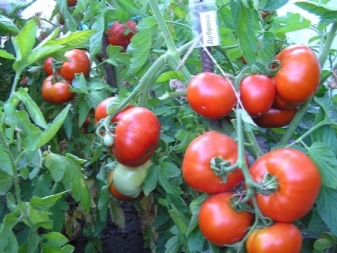
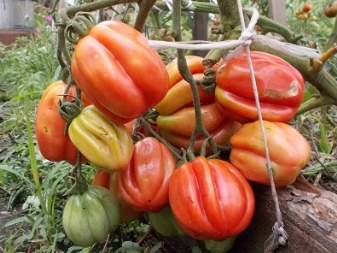













The comment was sent successfully.